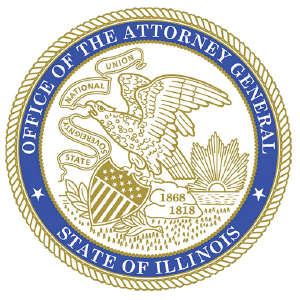George H. Hiland
“Peter” recalls his mother and grandmother loved that Father George Hiland took an interest in him. “‘Aren’t we going to get him something for Christmas?’ my mother asked, ‘We have to give him something.’ We ended up giving him house slippers.” It all made Peter feel like he was trapped—like he had nowhere to turn. There was no one he could tell that Hiland was sexually abusing him. Today, he remembers it vividly—the abuse, where it took place, and how Hiland made him feel. “I don’t really hate anyone,” he says. “But I really started hating him.”
The abuse started in the mid-1960s when Peter was in the seventh grade. He was an altar server at Saint Stephen in Streator, where he also attended school; his father had died when he was just 10 years old. Hiland approached Peter and asked if he would be afraid to go out with him. Peter said no, so Hiland took him to a bonfire. A short time later, they went for a drive. Hiland let Peter sit in his lap and hold the steering wheel. Then he began fondling Peter; eventually, he pulled down the young boy’s pants. Later, Hiland would perform oral sex on Peter and then force Peter to reciprocate. “I hated it,” Peter says. “But I didn’t know who to talk to.”
“We had sex everywhere,” Peter remembers—the church choir, the school cafeteria, the underground tunnel between the school and church, even on his teacher’s desk. The summer before eighth grade, Hiland took Peter to the woods near a local farm about twice a week. He forced the boy to strip naked; then he sprayed him from head to toe with mosquito repellent and had sex with him. But the worst was when Hiland had sex with Peter in the cemetery. “All I could think was that my father was buried there.”
Hiland made sure to “reward” Peter after each instance of abuse. “Every time we had sex, he would take me to Top Save,” Peter recalls. “I went in and would buy these plastic Aurora monster models and put them together. He gave me the money, and he would sit in the car while I would go in. I had every single model they came out with.”
“We had sex everywhere,” Peter remembers—the church choir, the school cafeteria, the underground tunnel between the school and church, even on his teacher’s desk.
The abuse finally stopped when Peter graduated from the eighth grade. He was relieved he would never have to see Hiland again once he started high school in the fall. That summer, he got a job at a root beer stand just to get away from the priest.
The Diocese of Peoria did not publicly acknowledge Hiland as having been credibly accused of child sex abuse until 2018—a few months after the Attorney General began investigating. Yet the diocese had known Hiland was a predator priest for 25 years. A 1993 memo describes Hiland’s abuse of one child in Streator in the 1970s and his admission to abusing a second. A 1994 letter from Bishop John Myers to Hiland acknowledges both men’s “sadness at the circumstances which have prompted you to submit your resignation as the Pastor of St. Patrick’s Parish, Dwight, and to seek retirement status in the diocese.” Bishop Myers also mentioned Hiland’s “unresolved issues which should be dealt with before you can effectively be involved in any priestly ministry” and the “serious recommendation for counseling and therapy.” Yet the bishop also made sure to praise Hiland: “I want to thank you for your generous and fine priestly service in the Diocese of Peoria. Literally thousands of people share this gratitude, and, I am sure, offer their prayers and best wishes to you.”
The diocese chose not to report Hiland’s abuse to law enforcement at the time of the incident, waiting to do so until 2018, after the Attorney General began investigating. A 1993 document helps to explain why. A church official wrote that such cases “should be managed in a way that restricts it to counseling at a moderate fee for a reasonable amount of time. The difficulty with counseling is that it can reinforce the desire to sue for compensation in large amounts. But this is a risk the priest and diocese has to take to fulfill our own policies.” In other words, the diocese was more concerned for its own bottom line than achieving justice for survivors.
The diocese apparently misplaced the 1993 memo describing Hiland’s abuse of one boy and admission to abusing another. It did not rediscover the damning documents until October 2018. This is yet another instance of the diocese’s shoddy recordkeeping practices, which for far too long deprived child sex abuse survivors of the healing that comes with seeing their abusers publicly named.
Today, Peter is sharing his experience to prevent others from living through what he did. “I just don’t want somebody else to have to go through this. It’s awful. And it seemed like all [Hiland] really cared about was controlling everything. He knew my father died. He used every little advantage he could,” Peter explains. “I’m pretty sure it’s still going on. I don’t really know how to stop all of this. But it’s very damaging. I’m very upbeat, but I keep a lot of stuff in.”
